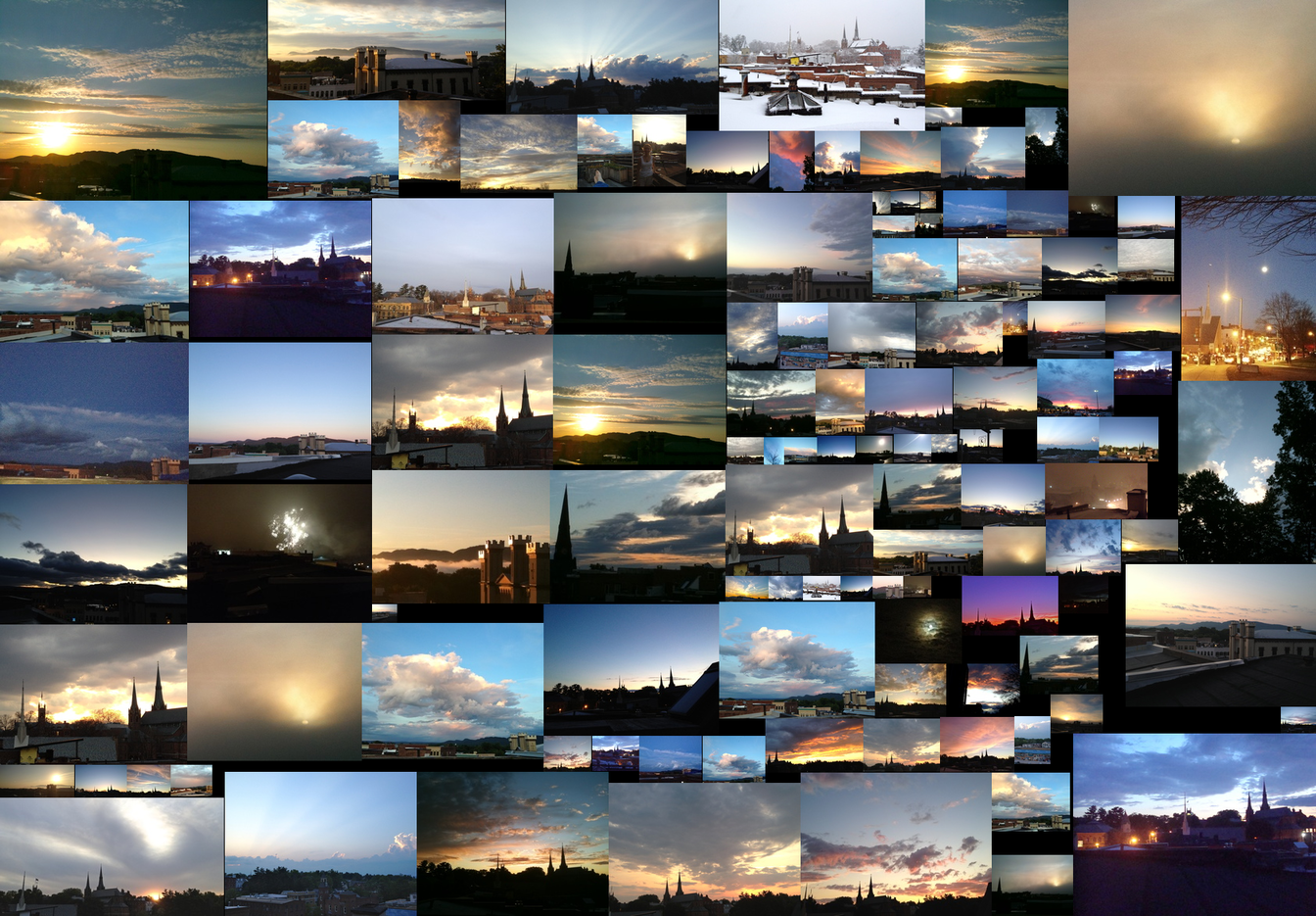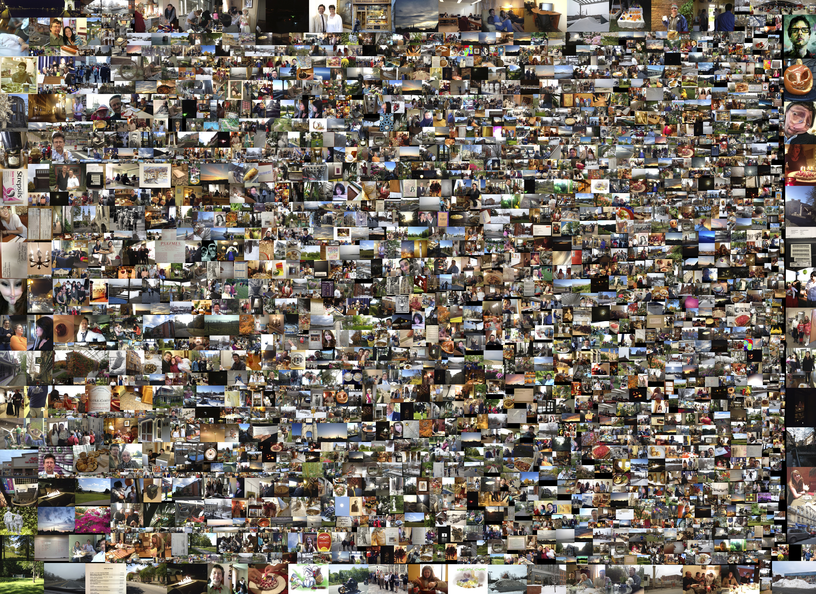Difference between revisions of "2D-Packing Rectangles and Images"
| Line 69: | Line 69: | ||
|} | |} | ||
| + | <br /> | ||
| + | =Packing Photographs= | ||
| + | The collage below contains about 200 photographs, some of them duplicated. They have all been resized by a random factor. The dimensions are not all the same as some photographs have been cropped to improve their artistic value. They represent sky shots taken in Northampton, MA, over the course of two years. All photos belong to this wiki owner. | ||
| + | <br /> | ||
| + | <center>[[Image:NohoSkiesCollage1.png | 800px]]</center> | ||
| + | <br /> | ||
| + | The collage below contains 2,200 photographs. The photographs have been resized by a random factor, and not all photographs have the same aspect ratio. All photographs owned this wiki owner. | ||
| + | <br /> | ||
| + | <center>[[Image:OneYear_2_2K.png| 800px]]</center> | ||
<br /> | <br /> | ||
Revision as of 15:34, 22 July 2013
--D. Thiebaut (talk) 10:26, 8 July 2013 (EDT)
2D-Packing Rectangles
This page is aliased to the easier to use URL: http://tinyurl.com/2DPacking.
It contains information about a 2D-rectangular packing heuristic developed by D. Thiebaut to create collages of large collection of images.
The 2D-Packing Algorithm and the videos were generated by
Dominique Thiebaut, (dthiebaut at smith.edu), Dept. Computer Science, Smith College, Northampton, MA 01060, USA.
Contents
One-thread 2D-Packing
|
|
A demo made of a 2D-Packing heuristic. The algorithm is given 10,000 randomly generated rectangles. |
Multithreaded 2D-Packing
|
|
A demo made of a 2D-Packing heuristic. The algorithm is given 10,000 randomly generated rectangles. |
Multithreaded 2D-Packing with pre-placed items
|
|
A demo made of a 2D-Packing heuristic. The algorithm is given 10,000 randomly generated rectangles, 5 of which have been modified to have fixed positions, and specific locations in the final rectangular surface. These are the pre-placed items.
|
Packing Photographs
The collage below contains about 200 photographs, some of them duplicated. They have all been resized by a random factor. The dimensions are not all the same as some photographs have been cropped to improve their artistic value. They represent sky shots taken in Northampton, MA, over the course of two years. All photos belong to this wiki owner.

The collage below contains 2,200 photographs. The photographs have been resized by a random factor, and not all photographs have the same aspect ratio. All photographs owned this wiki owner.

Publication
A report describing the algorithm is in the works and will be available shortly.